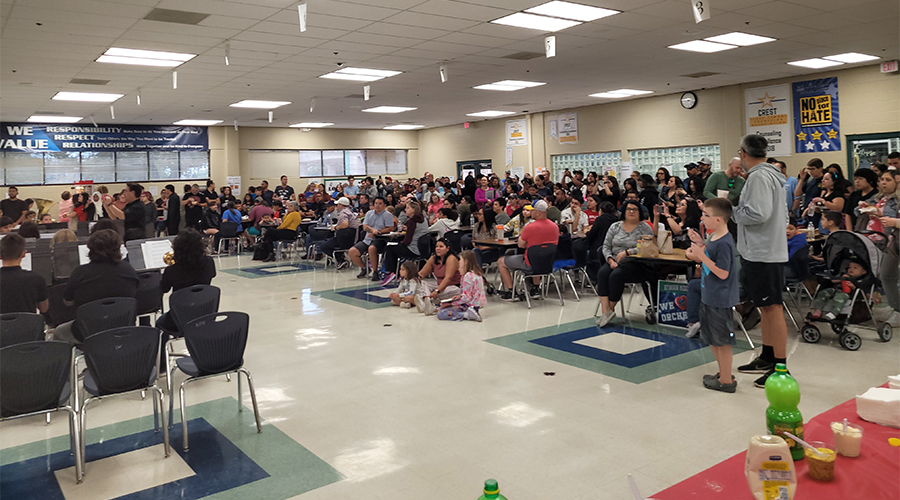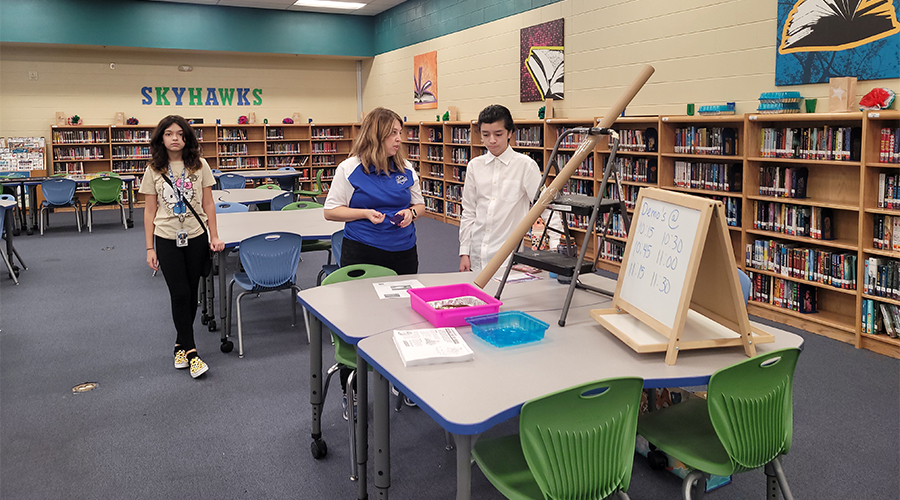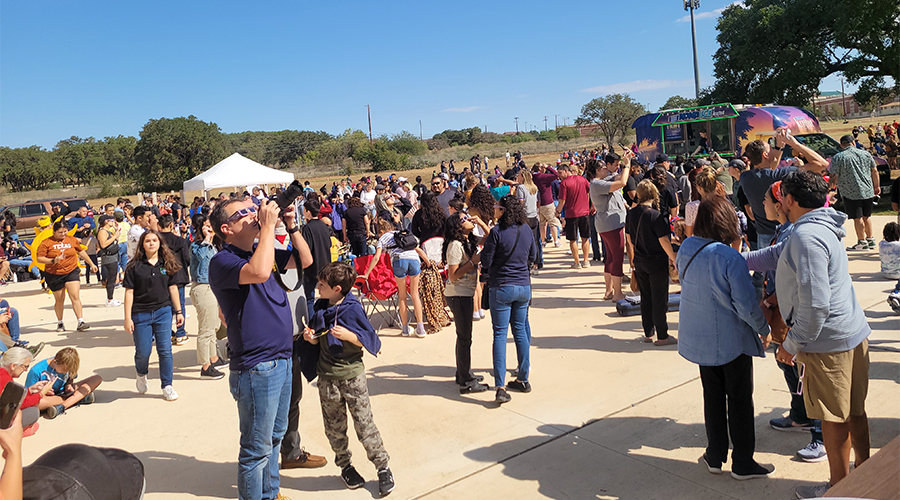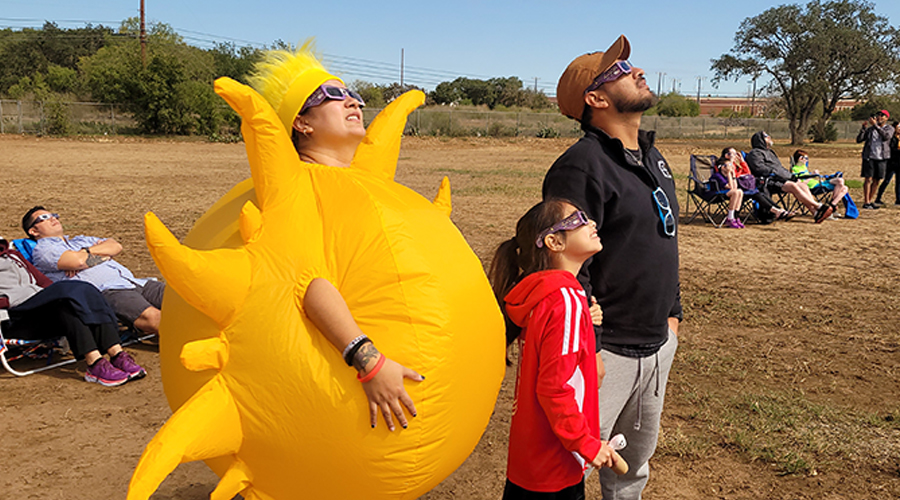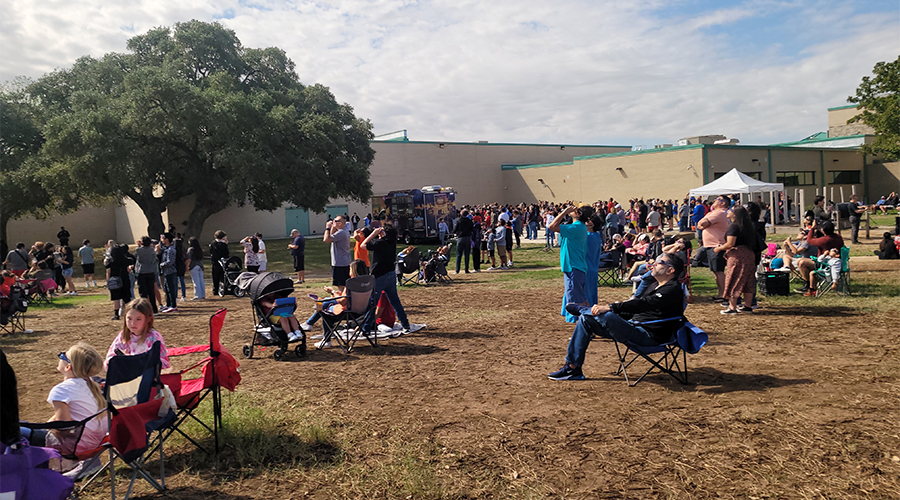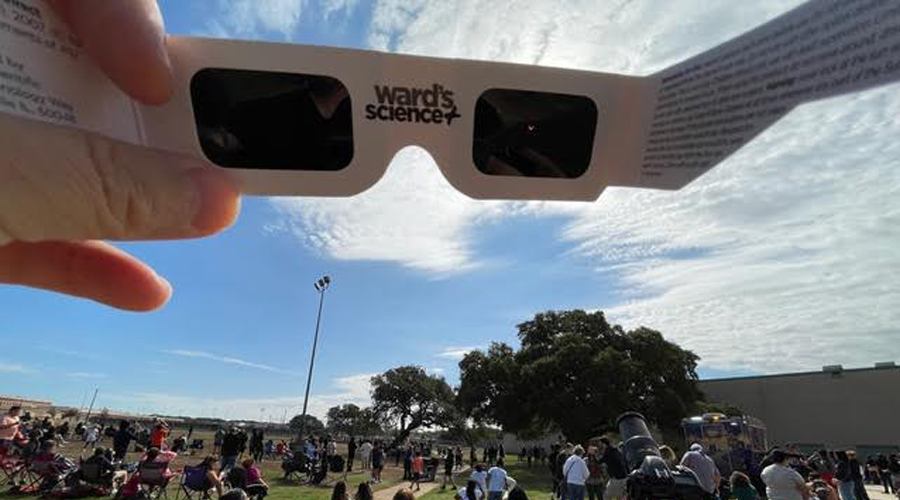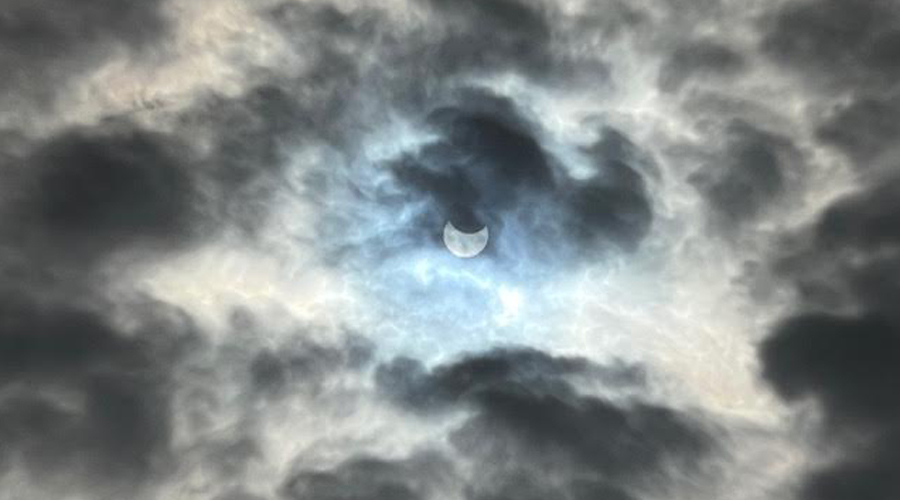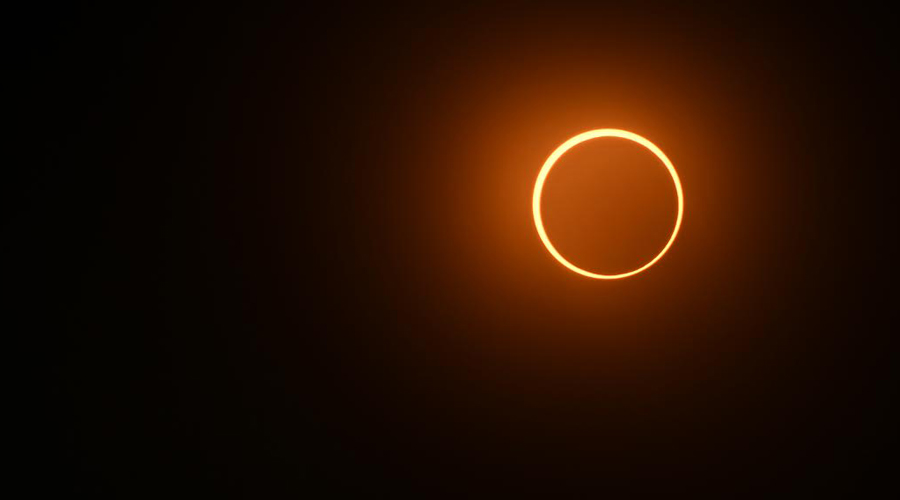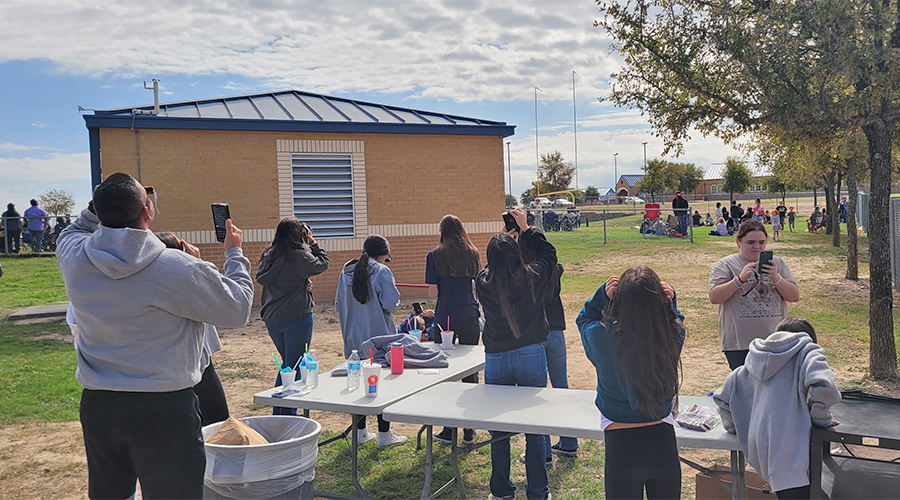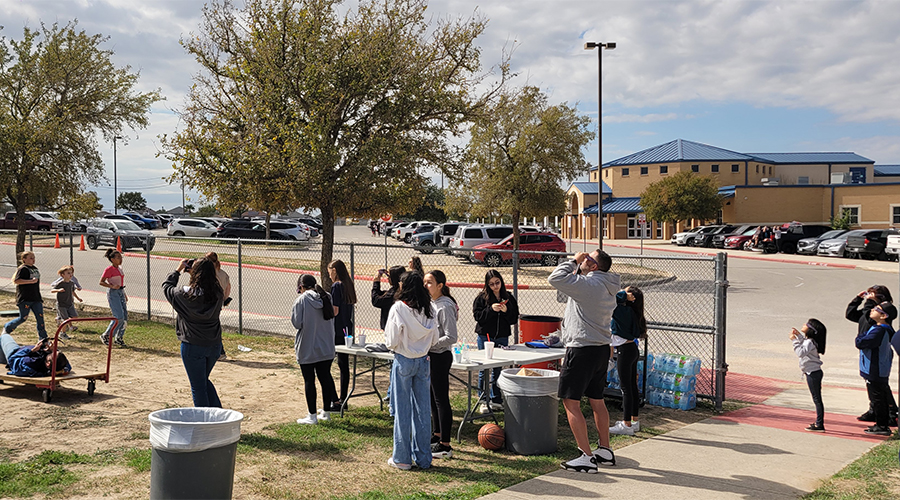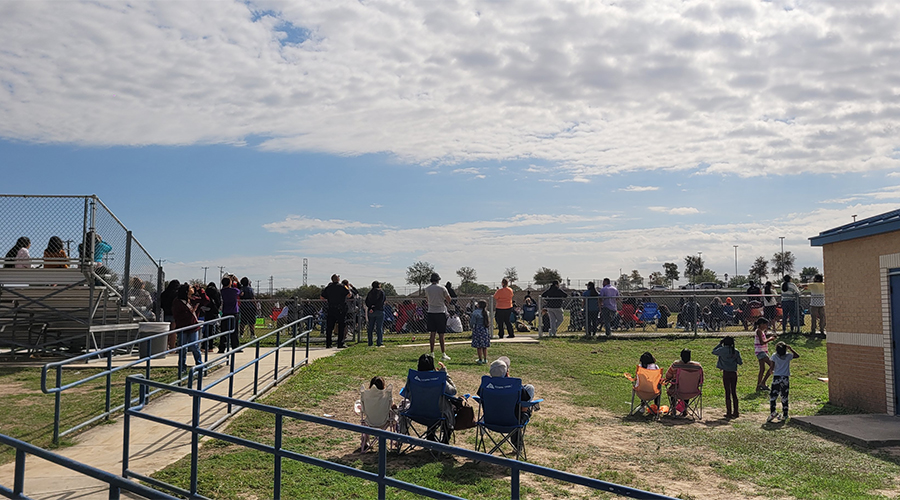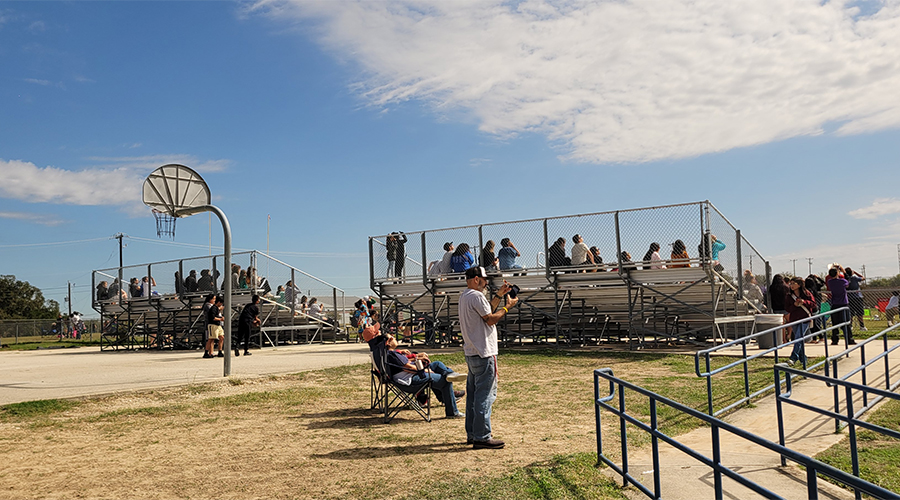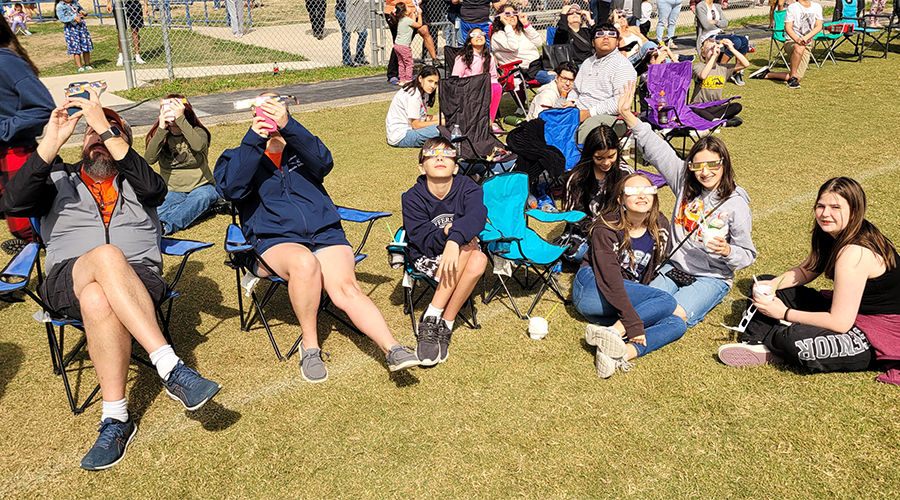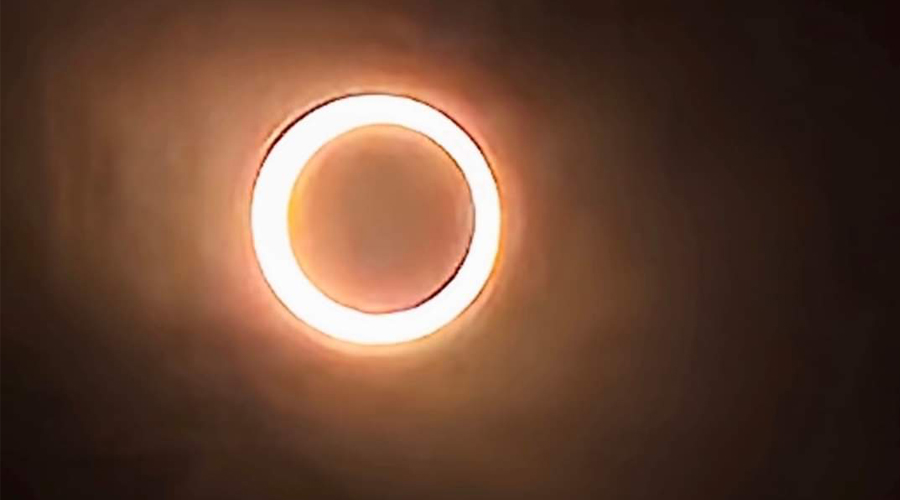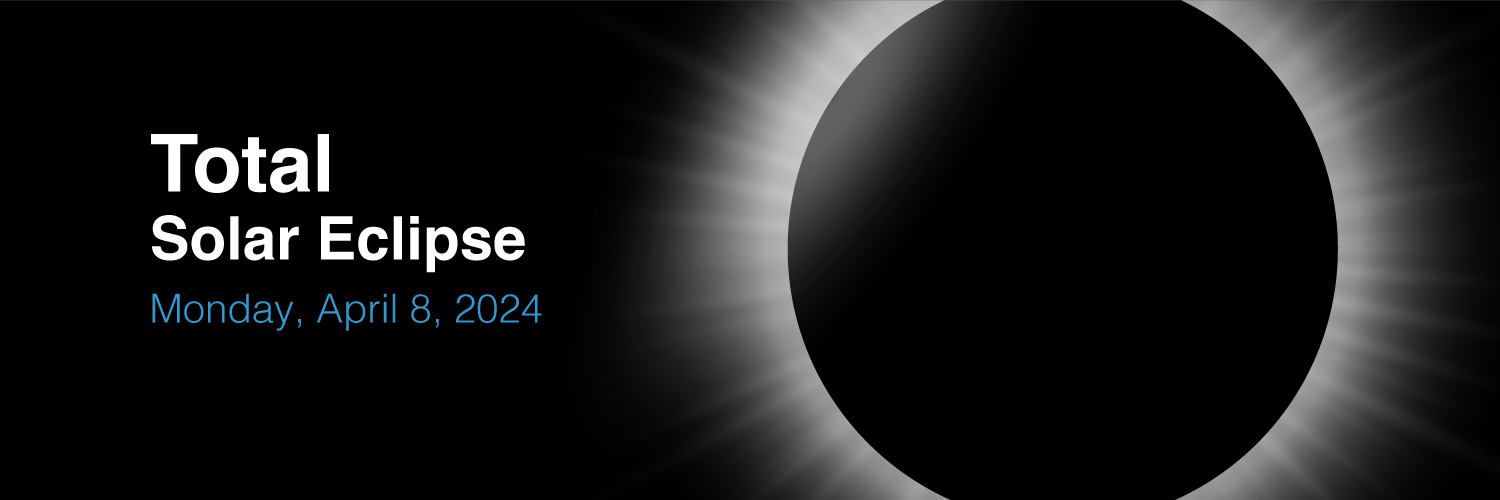
Solar Eclipse Viewing Across the District
Saturday, October 14th, 2023
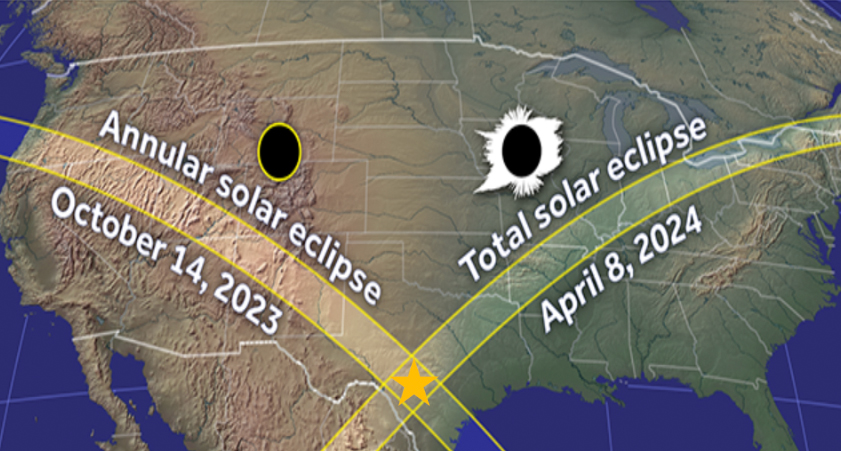
Two Eclipses Across Texas
On October 14, 2023, the United States witnessed the initial occurrence of the two solar eclipses scheduled for this school year. This annular eclipse was known as the "ring of fire" because the Moon did not block the entire sun, creating the appearance of a ring of fire in the sky.
The northwest part of San Antonio will be in the path for the Total Eclipse on April 8, 2024, where the Moon's shadow will completely cover the sun, turning daylight into darkness for a short period of time. We are fortunate to be able to experience both of these fascinating phenomena. It is predicted to take another three centuries before San Antonio experiences the next Total Eclipse.
Total Eclipse - Monday, April 8, 2024
Start of the partial eclipse for downtown San Antonio will begin at 12:14 PM CDT and end at 2:55 PM CDT. Maximum eclipse will take place at 1:34 PM CDT. Spectators in the San Antonio area will observe 99.9% obscuration of the Sun during this time.
For an interactive map of the path of totality and exact times for a specific area, spectators may use this link to the Path of Totality interactive Google Eclipse map.
➤ Since the total eclipse occurs on a school day, Northside ISD will provide viewing glasses for all students and staff to safely view this incredible phenomenon. Please ensure your child is in attendance to participate in engaging school-based activities.
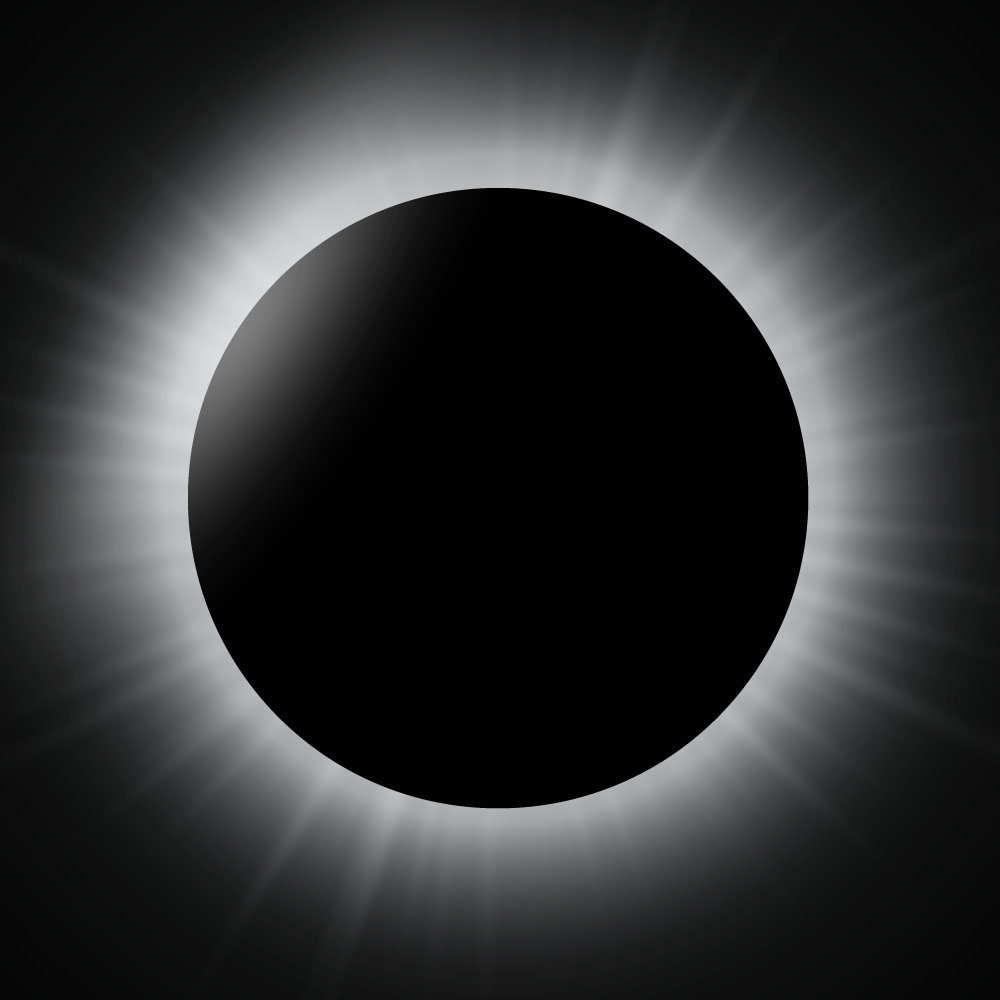

Eclipse Safety
There are many safety guidelines to follow when viewing a solar eclipse. According to the NASA website, you should abide by the following during an eclipse:
- Inspect eclipse glasses or handheld viewer
- If torn, scratched or damaged - DISCARD THE DEVICE
- ALWAYS supervise children using solar viewers.
- Concentrated solar rays will burn through optical device filters and cause serious eye injury. DO NOT look at the sun through the following devices:
- Camera lens
- Telescope
- Binoculars
- Other optical device
For further information on observing a solar eclipse without risking your eyes, you can visit the American Astronomical Society's webpage dedicated to eye safety: "How to Safely View a Solar Eclipse."
Informational Websites
- NASA's SpacePlace - Lunar and Solar Eclipses:
To learn more about lunar eclipses and solar eclipses, go to NASA’s SpacePlace.
- Exploratorium - Science of Solar Eclipses:
Check out Exploratorium to learn the science behind a Solar Eclipse.
- Exploratorium - Annular vs. Total Solar Eclipses:
What’s the difference between an annular solar eclipse and a total solar eclipse? Visit Exploratorium to find out!
- NASA's Solar System Exploration - Total Solar Eclipse Insights:
Visit NASA’s Solar System Exploration to learn more about why a total solar eclipse happens.
Video Resources
- National Geographic's Solar Eclipse 101 - Viewing Safety and Occurrence: (video)
To learn more about how solar eclipses occur and how to view the sun safety, go to National Geographic’s Solar Eclipse 101
- NASA - What Is an Annular Eclipse? (video)
To learn more about an annular eclipse, why it happens, and why it creates a “ring of fire” in the sky, visit NASA’s What Is an Annular Eclipse?
Eclipse Activities

Eclipse Cereal Box Viewer
Build your own solar eclipse viewer using a cereal box. Follow along using this video from NASA or use this step-by-step guide from StarNet.org.
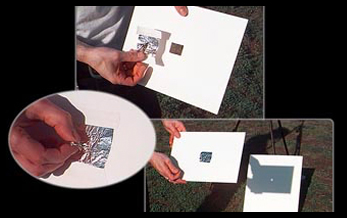
Colander and Solar Eclipse
What do a colander and a piece of cardboard have in common? They can both be used to observe a solar eclipse. Use the tips and techniques on Exploratorium Solar Eclipse to get the best view of the eclipse—without damaging your eyes!
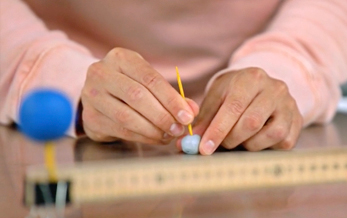
Solar Eclipse Model
How does a solar eclipse happen? Make your own model of a solar eclipse to learn why this phenomenon occurs. Use the video and instructions on Generation Genius to get started.
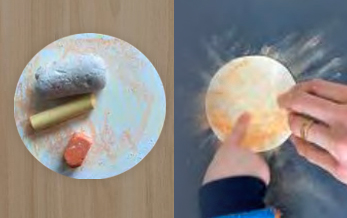
Eclipse Chalk Art
Many years ago, even before cameras and telescopes, people who saw eclipses wrote down and drew what they saw. You can enjoy making your very own picture of a solar eclipse using chalk and paper!
Solar Eclipse Apps
Totality by Big Kid Science
Use Totality to learn about upcoming eclipses around the world including the 2023 annular and 2024 total eclipse in the USA. Features include an interactive map that shows exactly when and what you will see at any location in the world as well as your current location. Also, includes information on how, when, and why eclipses occur and various activities.
Available for Apple iOS and Android devices.
DIY Sun Science App
Use DIY Sun Science to view live images of the Sun From NASA’s SDO satellite and images of the Sun from NASA’s Earth and space observatories. Also, includes 15 easy-to use hands-on activities to learn about the Sun and its important relationship with Earth.
Available for Apple iOS and Android devices.
